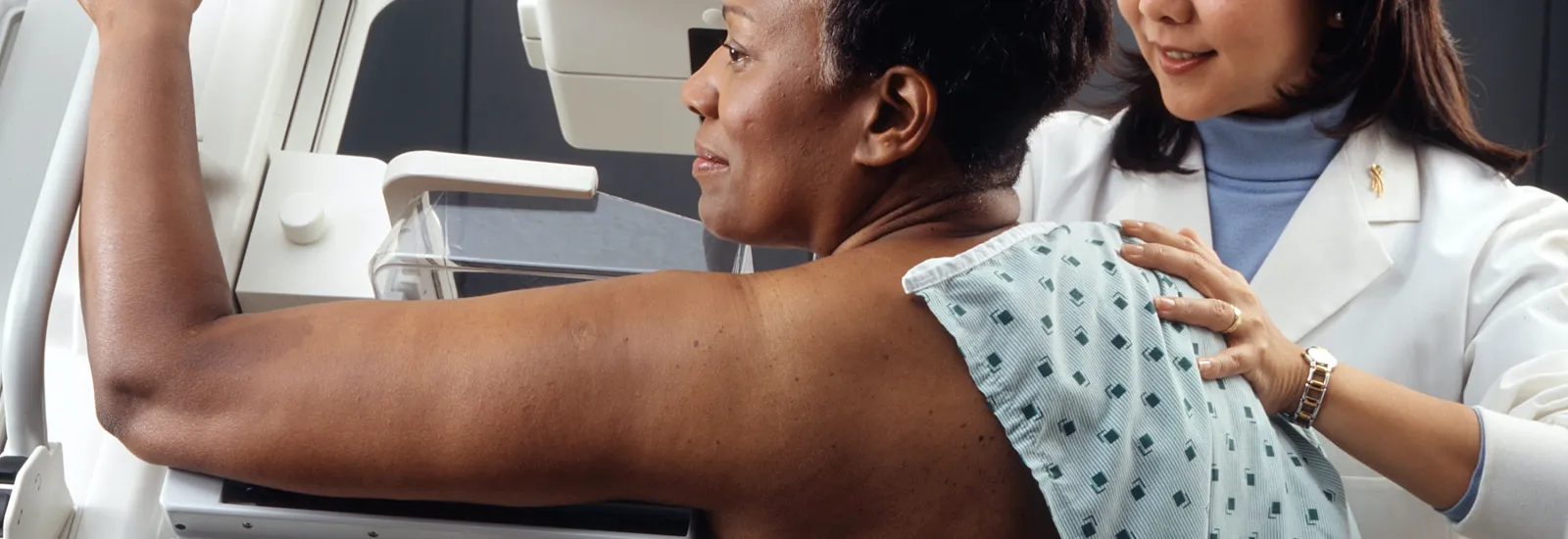What is the difference between 2D and #d mammogram imaging?
 2-minute read
2-minute read
You probably know how important it is for women to have annual screening mammograms. However, as 3D mammograms become more common, you may be wondering what the difference is between 2D and 3D mammograms. The difference is rather significant. Research shows 3D mammogram imaging is the best choice for all women, but especially for those under age 50 and women with dense breast tissue.
What is 3D mammogram imaging?
Mammogram machines take pictures of breast tissue using low-dose X-rays. These X-rays help providers detect breast cancer at early stages when it is the most treatable.
Both 3D and 2D mammograms are performed the same way: Two plates gently compress the breasts from two different angles, top to bottom and side to side. At the same time, the machine takes X-ray images. Unlike traditional or 2D mammograms, during 3D mammography, the machine takes a series of images from different angles as it moves around the breast. The combined images provide a three-dimensional view, giving a clearer picture of the breast tissues.
Enhanced detection
Although traditional mammograms are a good tool for helping providers detect breast cancer, recent studies show 3D mammograms are superior in several ways. 3D mammograms can:
- Find more cancers. Many studies show 3D mammograms can find cancers that may be missed using traditional mammography.
- Give more detailed pictures of dense breast tissue. Studies suggest women with dense breasts especially benefit from 3D mammograms. Having dense breasts means you have more fibrous and glandular tissue, which is harder to see through on a traditional mammogram. 3D mammograms clearly show multiple layers of breast tissue, allowing providers to better detect cancer.
- Reduce false positives. A false positive occurs when a mammogram shows an abnormal area of the breast that looks like cancer, but further testing reveals it’s noncancerous. 3D mammograms can lower the chances of this happening and reduce the likelihood of being called back for additional testing.
When to start mammograms
Women at average risk of breast cancer can begin annual screening mammograms at age 40, and women ages 50-74 should have screening mammograms every other year. Women who are at high risk should talk to their provider about the best time to begin screening. High risk means:
- Having a BRCA1 or BRCA2 gene mutation
- Having a first-, second-, or third-degree relative (parent, sibling, child, grandparent, aunt, uncle, niece, or first cousin) with a BRCA1 or BRCA2 gene mutation
- Having other syndromes that raise the chances of breast cancer, such as Li-Fraumeni syndrome
- Undergoing radiation therapy to the chest between ages 10 and 30.
Women who are at high risk of developing breast cancer may also have genetic testing to further determine their risk and whether they would benefit from early screening.
Request an appointment for your next mammogram at Reid Health.